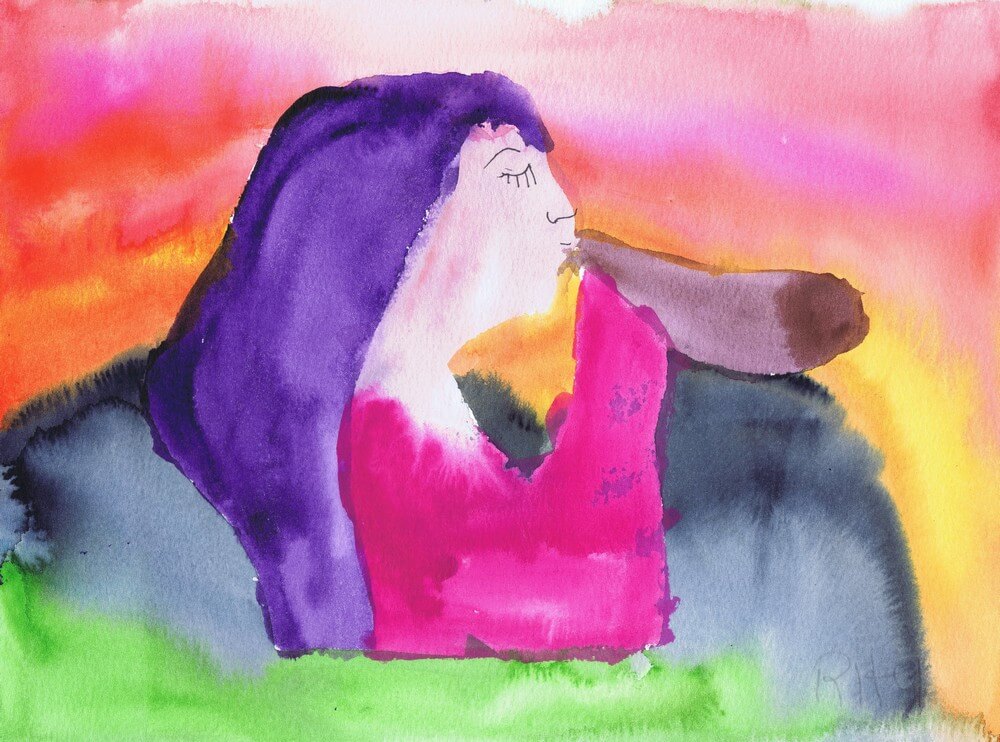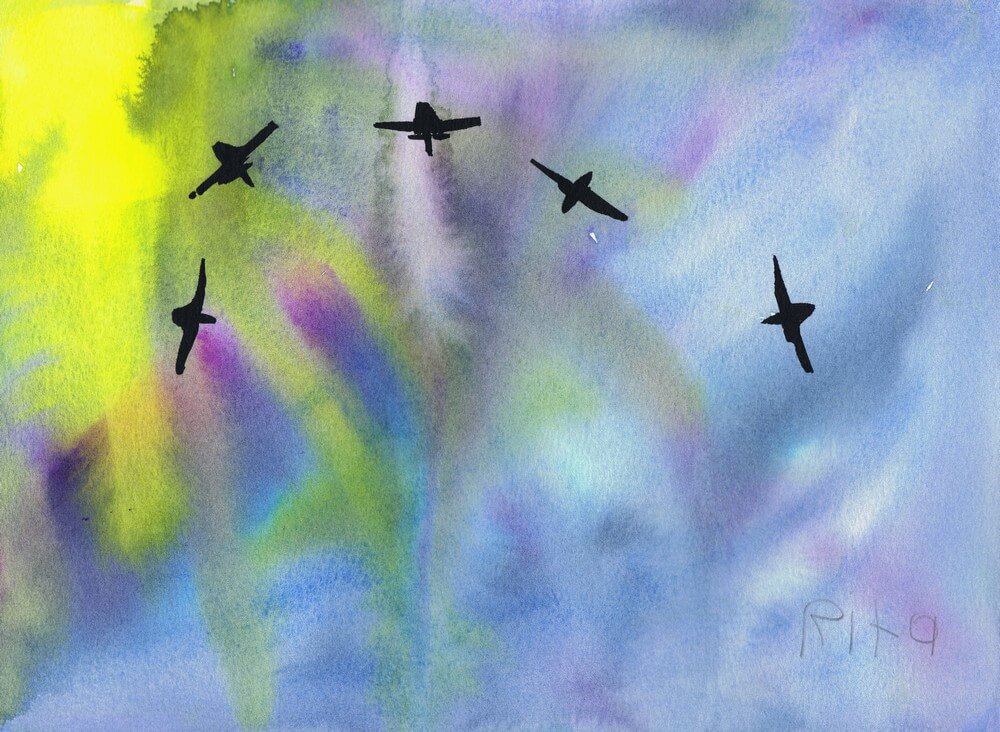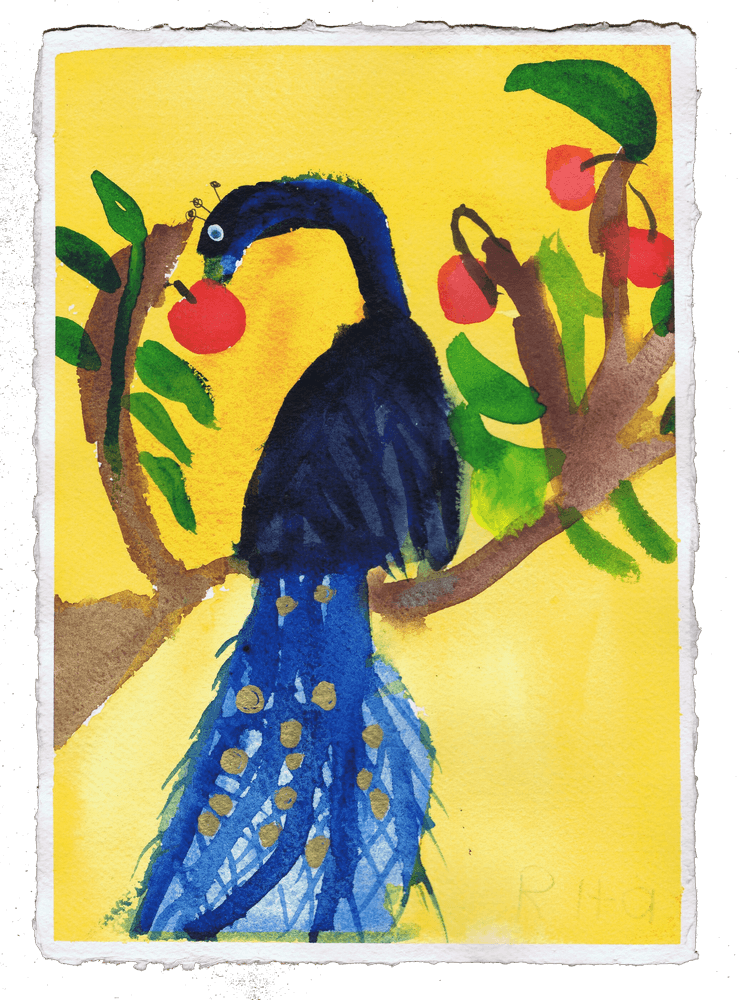Art has always been a powerful medium for expressing diverse perspectives and promoting inclusivity.
In recent years, there has been a growing recognition of the importance of art featuring individuals with Down syndrome. Various types and expressions of art featuring individuals with Down syndrome, artistic themes and techniques used, profiles of prominent artists with Down syndrome, and organizations supporting and celebrating their talents. The article delves into how art exhibitions and events can foster inclusivity and raise awareness. By shedding light on art featuring individuals with Down syndrome, this article aims to promote understanding, appreciation, and acceptance of their unique perspectives and artistic abilities.

Key takeaway:
- Diverse Perspectives: Art Featuring Individuals with Down syndrome promotes inclusion and diversity: Representation of individuals with Down syndrome in art helps to create a more inclusive society and showcase diverse perspectives.
- Artists with Down syndrome express themselves through various artistic techniques: Through art, individuals with Down syndrome are able to express their thoughts, emotions, and unique perspectives, showcasing their creativity and talent.
- Celebrating and supporting artists with Down syndrome: Organizations play a crucial role in supporting and promoting artists with Down syndrome, providing platforms for them to showcase their work and raising awareness about their abilities and contributions to the art world.
Diverse Perspectives: Art Featuring Individuals with Down Syndrome
The art created by or featuring individuals with Down syndrome showcases diverse perspectives and celebrates their unique creativity and talent. Here are some key aspects of this art form:
- Inclusion and Representation: Art featuring individuals with Down syndrome promotes inclusion and representation by giving them a platform to express themselves artistically. It challenges societal stereotypes and highlights the diverse abilities and perspectives of individuals with Down syndrome.
- Expression of Emotions: Through art, individuals with Down syndrome can communicate their thoughts, feelings, and experiences in a visual and expressive way. Art becomes a powerful tool for self-expression and allows them to share their unique perspectives with the world.
- Creative Exploration: Art provides an avenue for creative exploration, allowing individuals with Down syndrome to experiment with different mediums, styles, and techniques. It encourages them to embrace their artistic abilities and discover new forms of self-expression.
- Enhancing Fine Motor Skills: Engaging in art can help individuals with Down syndrome enhance their fine motor skills and hand-eye coordination. Through activities like painting, drawing, or sculpting, they can develop and refine their motor skills in a fun and engaging way.
- Promoting Self-Confidence: Creating art and showcasing it to others can boost self-confidence and self-esteem for individuals with Down syndrome. It provides a sense of accomplishment and pride, validating their abilities and talents.
- Education and Awareness: Art featuring individuals with Down syndrome plays a crucial role in raising awareness and educating the public about Down syndrome. It challenges preconceived notions and fosters a more inclusive and accepting society.
- Community Engagement: Art exhibits and events featuring individuals with Down syndrome create opportunities for community engagement and appreciation. They encourage dialogue, understanding, and celebration of the diverse talents and perspectives within the Down syndrome community.
- Advocacy for Inclusion: Art has the power to advocate for inclusion and equal opportunities for individuals with Down syndrome. It can inspire conversations about diversity, disability rights, and the importance of creating inclusive spaces in all aspects of society.
The art featuring individuals with Down syndrome is a testament to their creativity, resilience, and unique perspectives. It celebrates their abilities and contributes to a more inclusive and diverse artistic landscape.

Rita loves art and it has been an amazing way for her to share and communicate with those around her but “Not everyone would necessarily like art. I know people who strongly dislike art activities” and not everyone with “Down syndrome can/will benefit from art involvement.”
Helen Winkler
What is Down Syndrome?
Down syndrome is a genetic disorder that occurs when there is an extra copy of chromosome 21. This extra genetic material causes developmental and intellectual disabilities. It is the most common chromosomal condition, affecting approximately 1 in every 700 births worldwide. (DSAT)
What is Down syndrome? The presence of an extra chromosome affects the body’s development, leading to certain physical characteristics commonly associated with Down syndrome. These may include low muscle tone, upward slanting eyes, a flat facial profile, and a single deep crease across the center of the palm.
Individuals with Down syndrome may also experience various health issues, such as heart defects, hearing and vision problems, thyroid issues, and an increased risk of developing certain medical conditions. What is Down syndrome? Early intervention and medical care can help address these challenges and improve quality of life for individuals with Down syndrome.
It is important to note that individuals with Down syndrome have unique abilities, strengths, and talents. While they may face challenges in certain areas, they can also thrive and achieve personal growth. With proper support and opportunities, individuals with Down syndrome can lead fulfilling lives and contribute positively to their communities.
What Causes Down Syndrome?
Down syndrome is a genetic condition that is caused by the presence of an extra copy of chromosome 21 in a person’s DNA. This additional chromosome occurs randomly and is not influenced by the parents’ behavior or lifestyle choices. It is important to note that Down syndrome is not caused by anything the parents did or did not do, and it is not a result of any actions or choices.
Individuals with Down syndrome have 47 chromosomes instead of the usual 46. This extra genetic material leads to the characteristic features and developmental challenges associated with the condition. The additional chromosome is usually derived from the mother’s egg or the father’s sperm when they are formed.
In the United States, Down syndrome occurs in approximately 1 in every 700 births. While the exact cause of the extra chromosome is not fully understood, researchers continue to study and explore the genetic and environmental factors that may contribute to its occurrence.
Understanding the causes of Down syndrome can help promote awareness and compassion for individuals with the condition. By educating ourselves and others about the genetic basis of Down syndrome, we can foster a more inclusive and accepting society.
Art representation of individuals with Down syndrome shines a light on their unique perspectives, proving that creativity knows no boundaries.
Understanding Down Syndrome
Down syndrome is a genetic disorder caused by the presence of an extra copy of chromosome 21. It leads to physical and intellectual disabilities and affects individuals in various ways. Here are some key points to understand Down syndrome:
- Genetic Cause: Down syndrome is caused by a random error in cell division, resulting in an extra copy of chromosome 21. This extra genetic material affects the development and functioning of the body and brain.
- Physical Characteristics: Individuals with Down syndrome often have distinctive physical features, such as upward-slanting eyes, a flat facial profile, a small nose and ears, and a single crease across the palm.
- Cognitive and Intellectual Development: Down syndrome can lead to intellectual disabilities of varying degrees. Individuals may have delays in language development, learning difficulties, and challenges with memory and problem-solving.
- Health Concerns: People with Down syndrome may experience certain health conditions more frequently, including heart defects, respiratory issues, hearing and vision problems, thyroid conditions, and a higher risk of developing Alzheimer’s disease.
- Developmental Milestones: Individuals with Down syndrome may reach developmental milestones at a different pace than others. Early intervention, therapies, and educational support can help promote their overall development.
- Individuality and Abilities: Each person with Down syndrome is unique, with their own strengths, talents, and abilities. It is important to recognize and celebrate their individuality and provide opportunities for them to thrive.
- Inclusion and Support: Creating inclusive environments and providing support is essential for individuals with Down syndrome to fully participate in society. This includes access to education, employment opportunities, healthcare, and social engagement.
- Artistic Expression: Art can be a powerful medium for individuals with Down syndrome to express themselves, showcase their creativity, and challenge stereotypes. Artistic endeavors can contribute to their personal growth and foster a more inclusive society.
- Advocacy and Awareness: Advocacy efforts play a crucial role in promoting understanding, acceptance, and equal rights for individuals with Down syndrome. Increasing awareness and challenging societal perceptions help create a more inclusive and supportive world.
- Embracing Diversity: Recognizing and appreciating the diversity and unique perspectives of individuals with Down syndrome enriches our society and promotes a more inclusive and compassionate world for all.
Why is the Representation of Individuals with Down Syndrome Important?
Representation of individuals with Down syndrome is essential because it promotes inclusivity, breaks stereotypes, and fosters awareness and understanding. By showcasing individuals with Down syndrome in various art forms, societal norms and biases are challenged, and their unique abilities and perspectives are celebrated.
Incorporating individuals with Down syndrome into art enhances their visibility and acknowledges their talents and contributions. This representation helps create a sense of belonging, emphasizing their integral role in our diverse society.
Art also plays a vital role in dispelling stereotypes and misconceptions surrounding Down syndrome. Through art, individuals with Down syndrome can be portrayed as multi-dimensional beings, defying the limitations imposed by society. This representation empowers them, boosting their self-esteem and confidence, and inspiring them to pursue their passions and dreams.
The representation of individuals with Down syndrome in art encourages awareness and understanding among the general public. By showcasing their talents and achievements, preconceived notions are challenged, and others are educated about their capabilities and potential. This awareness fosters acceptance and inclusion in important aspects of life, such as education, employment, and social interactions.
Art opens the door to a world where inclusion and diversity are celebrated, making it a powerful tool for promoting understanding and acceptance.
How Does Art Promote Inclusion and Diversity?


Art plays a crucial role in promoting inclusion and diversity by providing a platform for individuals with Down syndrome to express themselves and share their unique perspectives. Through art, individuals with Down syndrome can showcase their talents, challenge societal stereotypes, and contribute to a more inclusive and diverse artistic community. Art exhibitions and events featuring their work not only increase visibility but also create opportunities for dialogue and understanding.
By showcasing art created by individuals with Down syndrome, we can promote a more inclusive society that values diversity and recognizes the talents and contributions of all individuals. These exhibitions and events serve as educational tools, enlightening the public about the capabilities and creativity of individuals with Down syndrome. Art has the power to break down barriers and foster empathy among people from different backgrounds.
When artists with Down syndrome express themselves through various artistic techniques, their works challenge traditional notions of beauty and ability, thus encouraging the public to reevaluate their preconceived notions and stereotypes associated with Down syndrome. Art can be a catalyst for social change.
Additionally, art not only promotes inclusion and diversity but also cultivates a sense of belonging and self-confidence among individuals with Down syndrome. Through artistic expression, they can connect with others, communicate their thoughts and emotions, and find a voice that may have otherwise gone unheard.
What Types of Art Feature Individuals with Down Syndrome?
There are different types of art that feature individuals with Down syndrome, showcasing their talents and unique perspectives.
- Paintings: Many artists with Down syndrome create beautiful paintings that reflect their emotions, experiences, and imagination. These paintings often showcase vibrant colors and abstract or figurative styles.
- Sculptures: Sculptures created by individuals with Down syndrome can vary in materials and styles. They can be made from clay, wood, or other materials, and may represent human figures, animals, or abstract shapes.
- Photography: Some individuals with Down syndrome have a keen eye for photography and capture stunning images. These photographs can depict landscapes, people, or everyday objects, offering a glimpse into their unique perspective.
- Textile art: Individuals with Down syndrome may also express themselves through textile art, such as weaving, embroidery, or quilting. These art forms showcase their creativity, attention to detail, and use of color and texture.
- Performance art: Some individuals with Down syndrome excel in performance art, including dance, theater, or music. Their performances not only entertain but also challenge societal perceptions and promote inclusion.
Celebrating Artists with Down Syndrome
Get ready to be inspired and amazed as we dive into the world of celebrating artists with Down syndrome. We will shine a spotlight on the incredible talent and creativity found in this community, starting with captivating profiles of prominent artists. Then, we’ll explore the invaluable support provided by organizations that champion and empower these artists. Get ready to be moved by their extraordinary journeys and remarkable contributions to the art world.
Profiles of Prominent Artists with Down syndrome
| Artist | Art Medium | Notable Works |
|---|---|---|
| James Anderson | Painting | “Colors of the Soul” – a vibrant collection of abstract paintings exploring the complexity of human emotions. |
| Emily Collins | Sculpture | “Embracing Differences” – a series of sculptures depicting individuals with different abilities standing together in unity. |
| Michael Gomez | Photography | “Through Their Lens” – a captivating collection of photographs capturing the unique perspectives and experiences of individuals with Down syndrome. |
| Sarah Johnson | Mixed Media | “Unlimited Possibilities” – a mixed media installation showcasing the limitless potential of individuals with Down syndrome. |
| Thomas Lee | Collage | “Pieces of Me” – a series of intricate collages representing the fragments of identity and self-discovery. |
The above table features Profiles of Prominent Artists with Down syndrome. Together, these talented individuals bring their unique perspective and creative expression in various art mediums, challenging societal stereotypes and showcasing the beauty of diversity.
These individuals have received recognition and acclaim for their artistic contributions, challenging the notion that individuals with Down syndrome are limited in their abilities. Their artworks inspire and provoke thoughtful conversations, encouraging society to embrace diversity and inclusion.
By celebrating the talent and creativity of these artists, we can foster a greater understanding and appreciation for individuals with Down syndrome. Their profiles serve as a testament to the power of art to break down barriers and promote societal change.
Supporting artists with Down syndrome: making the world a more inclusive and colorful place, one brushstroke at a time.
Organizations Supporting Artists with Down Syndrome
Organizations supporting artists with Down syndrome play a vital role in nurturing and empowering these individuals, providing them with opportunities, resources, and platforms to showcase their talents. Here is a curated list of organizations that actively support and promote artists with Down syndrome:
- Down Syndrome Arts and Music (DSAM): DSAM is a non-profit organization dedicated to promoting and supporting artists with Down syndrome. They offer art classes, workshops, and exhibitions to help artists develop their skills, gain recognition in the art community, and provide them with a supportive community.
- Artistic Expressions: Artistic Expressions is an organization that provides art therapy and mentorship programs specifically designed for individuals with Down syndrome. Through their inclusive programs, artists can explore a wide range of artistic mediums, express themselves creatively, and build confidence in their abilities.
- Down Syndrome Association: Many local Down syndrome Associations have art programs and initiatives aimed at supporting artists with Down syndrome. They provide valuable resources, workshops, and platforms for artists to showcase their work within the community, fostering a sense of inclusivity and creating opportunities for growth.
- Art Enables: Art Enables is a studio and gallery that supports artists with disabilities, including those with Down syndrome. They offer professional development opportunities, exhibitions, and a nurturing environment for artists to thrive and reach their full potential.
- National Down Syndrome Society (NDSS): NDSS is a national organization that advocates for the rights and inclusion of individuals with Down syndrome. They actively support various art initiatives and collaborate with other organizations to create meaningful opportunities for artists with Down syndrome to showcase their talents and contribute to the diverse landscape of art.
These organizations play a crucial role in providing the necessary support and recognition for artists with Down syndrome. Through their programs and initiatives, these talented individuals can express themselves creatively, showcase their unique abilities, and make valuable contributions to the art community.
Art has the power to break barriers and promote inclusivity, creating a space where everyone’s unique perspective is celebrated.